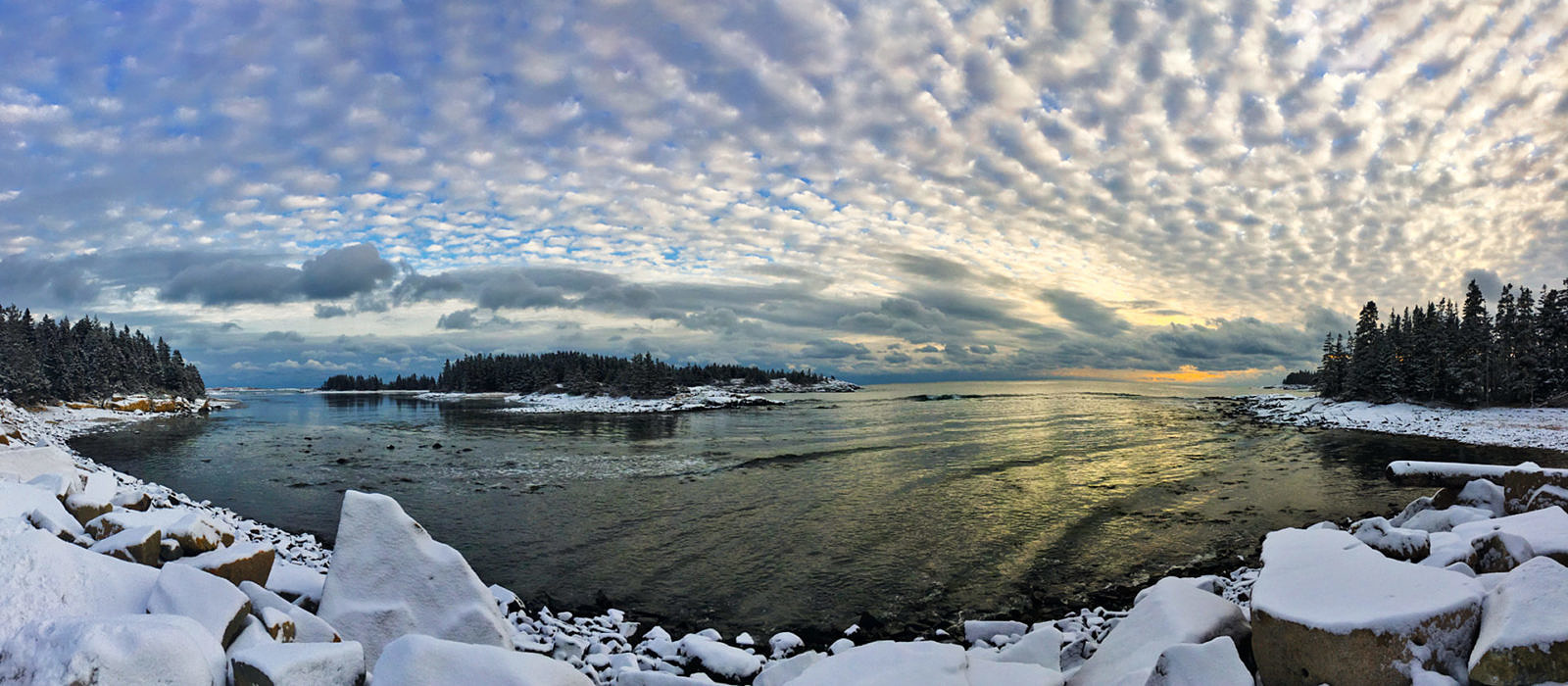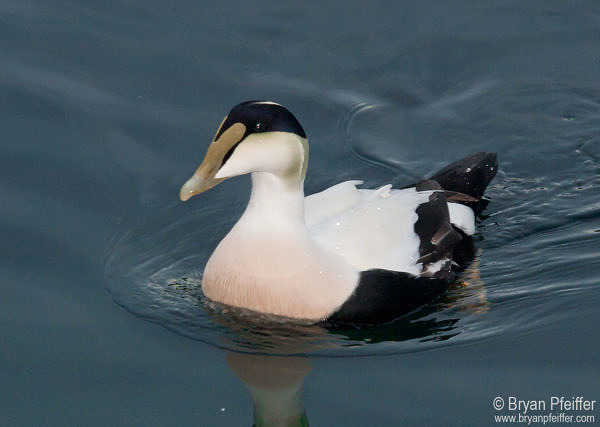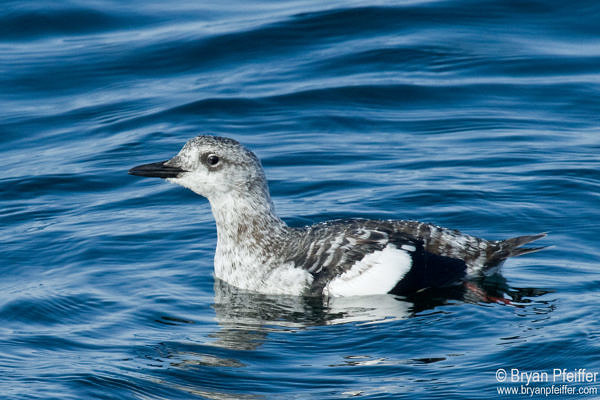
The Point of Schoodic Point
Dawn at Schoodic Point, one of a million places in Maine where bedrock mingles with the Atlantic Ocean. Black Guillemots, not black but suitably frosty this time of year, are whirligigs in flight. Drake Common Eiders, feeding just offshore, show napes of key-lime green. And Red-necked Grebes, stout and sturdy in the water, are, well, I’m sorry — they’re dorky in flight.
Here at the point, in Acadia National Park, the new year is green and white: fresh snow on forests of spruce and jack pine. From these quiet woods I hear new ocean waves breaking on 400-million-year-old granite. And on my first full day here yesterday, I enjoyed that quilted sunset sky above from what is essentially my front yard.
For the next few weeks I’ll be encamped near Schoodic Point, mostly to see if the world might stop spinning so fast — and to try making some sense of it all. I’ll do that by walking and writing. My host here in the national park is the Schoodic Institute, a former naval based transformed into a center for research and education. From here at Schoodic, the U.S. Navy once used satellites and a gigantic antenna array to triangulate the location of foreign warships, and to help guide cruise missiles in flight over the horizon.

Common Eider
Imagine that — a military listening site now a place where we listen to nature. If you know me, you know that Schoodic is my kind of point. On this campus, scientists and students study everything from ocean warming to insect diversity. And they do it with a genuine dedication to citizen engagement. (I’ll be giving the Brown Bag lunch lecture — on the new science of migration — here on January 19.) The Schoodic Institute has a kinship with another Down East center for learning, the Eagle Hill Institute, where I teach seminars on dragonflies and damselflies, and on moths and butterflies.
War, of course, is the ultimate environmental and human catastrophe. But as it turns out, the U.S. military, one of the country’s biggest landowners, does show its green stripes from time to time. I’ve been hired to study rare butterflies on National Guard land, for example, and my colleagues at the Vermont Center for Ecostudies are partnering with the Department of Defense to study grassland birds on military sites across the country.
So, from here at Schoodic this month, I’ll be listening more to waves on rock than to the tsunami rocking Washington. And although I’m loving Maine right now, I’ll point with pride to the touching and sensible inaugural address last Thursday from our new Republican governor, Phil Scott, in my home state of Vermont. In Governor Scott we hope the legacies of Vermonters George Aiken and Jim Jeffords survive, like a seed bank of sanity in the shitstorm now blowing through our nation’s capital, our politics and our commons.
Here’s my bird list from Schoodic Point and environs yesterday.

Black Guillemot
- American Black Duck
- Common Eider
- White-winged Scoter
- Black Scoter
- Long-tailed Duck
- Bufflehead
- Red-breasted Merganser
- Common Loon
- Horned Grebe
- Red-necked Grebe
- Great Cormorant
- Northern Harrier
- Bald Eagle
- Purple Sandpiper
- Black Guillemot
- Herring Gull
- Great Black-backed Gull
- Northern Flicker (rare here in January)
- American Crow
- Golden-crowned Kinglet

Thanks, Donna. Nice to hear from you! I hope to get to Monhegan in spring for a change this year.
Thanks for painting such a beautiful picture in writing. Damselflies is my new favorite word.
Thanks! Yes, just the right dose of flying things. Any more, like being in TX, and I wouldn’t get any work done. 🙂
You’re in NC, right? Not up here?
Nice gig, Bryan! Have fun! That flicker is pretty crazy.
Enjoy your time at this fantastic location. The writing muse will envelop you!
Thanks, Rita! Yes, to seize the winter, we must seize the angled light!
Jealous (as usual!). But with the sun shining so brilliantly here in northern Vermont causing sparkles like diamonds on top of the snow, I watch the Chickadees and dream of spring’s coming. Have fun!